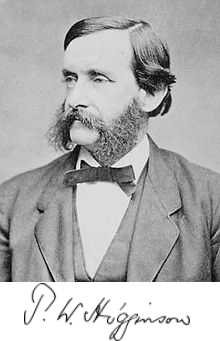Time Life Collector's Library
MS 6th Infantry Battalion
MS 18th Infantry Regiment
MS 19th Infantry Regiment
 Thomas Wentworth Higginson, a Unitarian minister, was a fervent member of new England's abolitionist movement, an active participant in the Underground Railroad, and part of a group that supplied material aid to John Brown before his ill-fated raid on Harpers Ferry.
Thomas Wentworth Higginson, a Unitarian minister, was a fervent member of new England's abolitionist movement, an active participant in the Underground Railroad, and part of a group that supplied material aid to John Brown before his ill-fated raid on Harpers Ferry.
